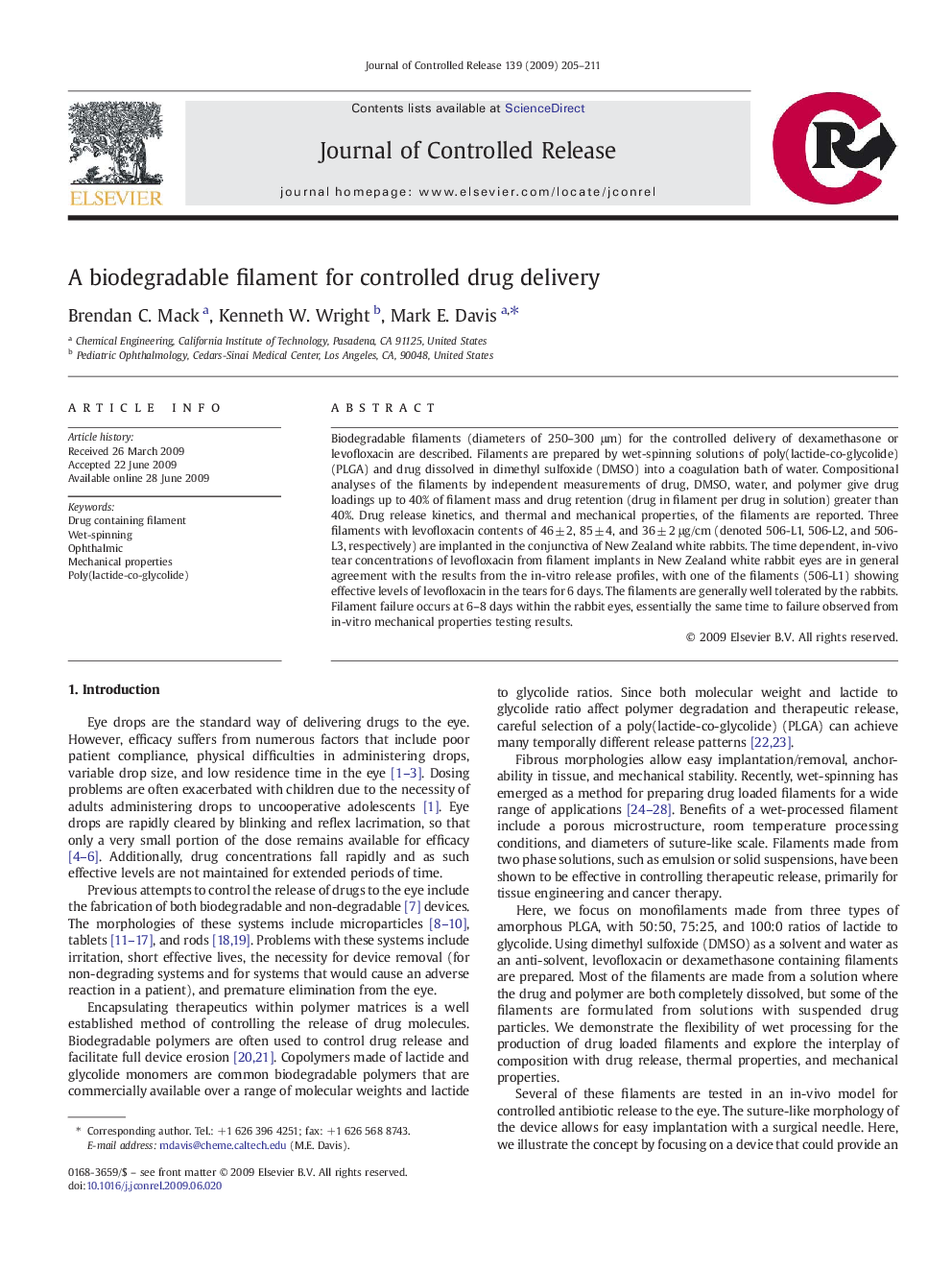| Article ID | Journal | Published Year | Pages | File Type |
|---|---|---|---|---|
| 1426181 | Journal of Controlled Release | 2009 | 7 Pages |
Biodegradable filaments (diameters of 250–300 μm) for the controlled delivery of dexamethasone or levofloxacin are described. Filaments are prepared by wet-spinning solutions of poly(lactide-co-glycolide) (PLGA) and drug dissolved in dimethyl sulfoxide (DMSO) into a coagulation bath of water. Compositional analyses of the filaments by independent measurements of drug, DMSO, water, and polymer give drug loadings up to 40% of filament mass and drug retention (drug in filament per drug in solution) greater than 40%. Drug release kinetics, and thermal and mechanical properties, of the filaments are reported. Three filaments with levofloxacin contents of 46 ± 2, 85 ± 4, and 36 ± 2 μg/cm (denoted 506-L1, 506-L2, and 506-L3, respectively) are implanted in the conjunctiva of New Zealand white rabbits. The time dependent, in-vivo tear concentrations of levofloxacin from filament implants in New Zealand white rabbit eyes are in general agreement with the results from the in-vitro release profiles, with one of the filaments (506-L1) showing effective levels of levofloxacin in the tears for 6 days. The filaments are generally well tolerated by the rabbits. Filament failure occurs at 6–8 days within the rabbit eyes, essentially the same time to failure observed from in-vitro mechanical properties testing results.
Graphical abstractFigure optionsDownload full-size imageDownload as PowerPoint slide
